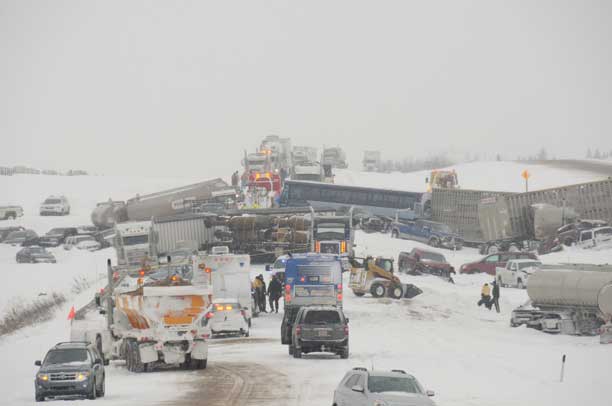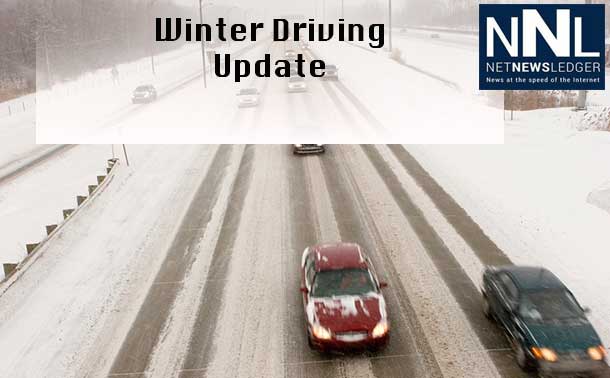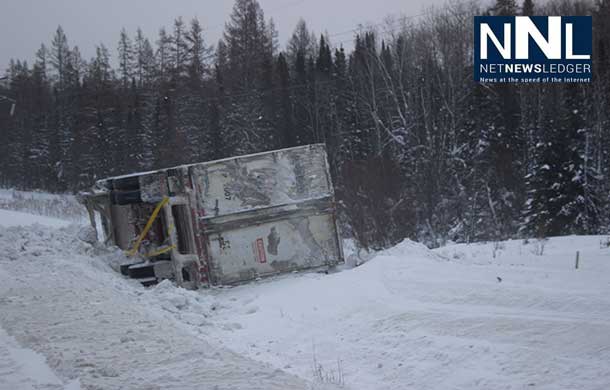
Drive to Stay Alive This Winter
THUNDER BAY – LIVING – Winter weather and driving generate accidents. Some of those accidents can be easily prevented.
All it takes is preparing for the weather conditions, and taking the time to drive to survive.
Keeping your vehicle ready for winter, and keeping the right supplies
Keep your vehicles in shape for winter driving
- Winterize your vehicles. This should include an examination of the spare tire, battery, belts, hoses, anti-freeze, tires, brakes, heater, defroster and windshield wipers.
- Carry an emergency road kit in your vehicle’s trunk or cargo space.
- Clear all snow and ice completely off windows, side view mirrors, headlights, taillights and licence plates.
- Buckle up and adjust head restraints. The centre of your head restraint should be even with the top of your ears.
- Try to keep your vehicle’s fuel tank more than half full. The extra volume can help reduce moisture problems in your fuel system and it adds extra weight to your vehicle. A topped-up gas tank will also be an asset if you become stranded.
- Don’t expect clear and dry summer highway conditions in the winter
While road clearing crews for municipal and provincial governments work hard to keep roads clear and open to traffic during the winter.
That does not mean the highways are going to be perfect. The fact is, some severe storms exceed the ability of road crews to keep roads, streets and highways clear of snow and ice. This may be caused by the amount of snow, timing or duration of the storm, high winds, freezing rain or a combination of all of these factors.
Drive cautiously during bad weather
- Slow down when conditions aren’t ideal. The posted speed limit is intended for ideal road conditions. Even if road signs say you may drive 90 km/h, that doesn’t mean you should if the road is icy or snow-covered.
- Motorists have a legal obligation to drive according to road conditions. You can be charged with a traffic offence by police if you are found not to be doing so.
- Unless travel is absolutely necessary, stay off the roads during major storms.
- Stay back from snowplows. They will let you pass every five to eight kilometres or when it is safe to do so
- Plan the best route to your destination ahead of time.
- Keep your headlights on all the time – don’t rely on daytime running lights. Low beams are more effective than high beams in fog or heavy snow conditions.
- Never use cruise control in winter conditions.
- When travelling on snowy roads, try driving outside of the previous tire tracks to give you some extra traction. This also helps when there are shiny ruts in the road.
- Signal well in advance of turning to give other motorists time to anticipate and react to your actions. Check your rearview and side mirrors, and always shoulder check before changing lanes.
- Avoid sudden moves by anticipating turns or lane changes. Abrupt changes in direction or slamming on the brakes could cause you to spin out of control.
- On a wet or slick surface, allow yourself at least three times the normal following distance to stop.
- Remember that bridge decks may be slippery even when other parts of the highway are not, since they are subject to greater temperature fluctuations.
- Know your braking system and how it reacts on ice. Always be gentle with braking pressure on slick roads.
- Avoid braking on curves by driving through them at a safe, steady speed.
- Accelerate slightly when approaching a hill and then maintain a steady speed going up.
- Gear down for both uphill climbs and downhill grades. This can help you avoid brake wear and chances of sliding. But be careful of abrupt downshifting as it can upset a vehicle’s balance and cause a skid to occur, particularly when turning.
- Take your foot off the brake if your vehicle begins to skid and steer in the direction you want to go. When the wheels regain their grip, brake firmly and smoothly.
- If you are driving a rear-wheel drive, prepare to steer just enough in the opposite direction in order to prevent a counter skid.
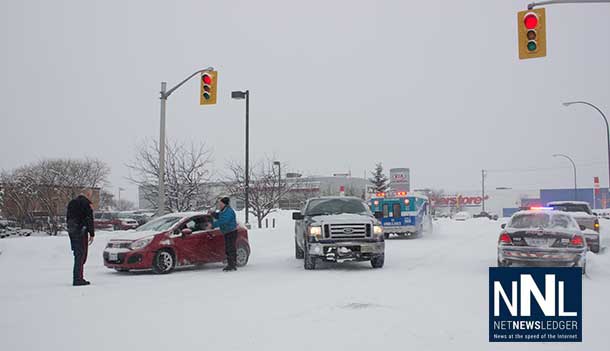
Thunder Bay Police Advise on Accident Reporting
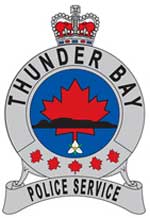 Thunder Bay Police report: The self-reporting center that is located in the lobby of the Balmoral St police station will be expanding the hours of operation starting December 1 to meet the increased volume of reports that we anticipated during the winter months. It will be open from 9:00 a.m. to 6:00 p.m. Monday to Friday and from 10:00 a.m. to 4:00 p.m. on Saturday. No service is provided on Sunday.
Thunder Bay Police report: The self-reporting center that is located in the lobby of the Balmoral St police station will be expanding the hours of operation starting December 1 to meet the increased volume of reports that we anticipated during the winter months. It will be open from 9:00 a.m. to 6:00 p.m. Monday to Friday and from 10:00 a.m. to 4:00 p.m. on Saturday. No service is provided on Sunday.
Police would like to remind everyone that if there is a collision that results in an apparent combined damage greater than $1000.00 OR personal injury of any extent, a police report MUST be filed “forthwith”. This applies to collisions that occur on a public road or on private property.
Just a comment about the ever increasing tendency for people to “settle this without police”…..
You do this at your own peril if the “deal” falls apart, – and it almost always does. If you then plan to turn to your own insurance, you may find yourself in a very difficult position in terms of coverage, so you should have the discussion with your broker, an insurance professional, and prior to any collision to learn more about this. Almost all insurance companies will not process a claim without a police report, and that will sometimes put you into a difficult position with the law because it wasn’t reported “forthwith”.
Police are noticing that an increasing number of drivers are failing to have seriously damaged vehicles towed from the collision scene, and are attempting to drive them home or to the reporting center. It is against the law to drive an unsafe motor vehicle, and that would include airbags that have been deployed or wheels that are wobbly or other obvious signs of damage.
Safety Supplies to Take on the Road
For your comfort, safety and peace of mind, you should carry an emergency road kit in your vehicle’s trunk or cargo space. Pack or replenish these supplies:
• blanket
• extra clothing and footwear
• emergency non-perishable food • candle in a deep tin
• waterproof matches
• first aid kit
• flashlight with extra batteries
• fire extinguisher
• booster cables
• ice scraper
• snowbrush
• paper towels or rags
• road map
• compass
• sand, road salt or kitty litter, and • shovel.
If you have a cell phone, carry it with you.

